#charlotte von mahlsdorf
Photo

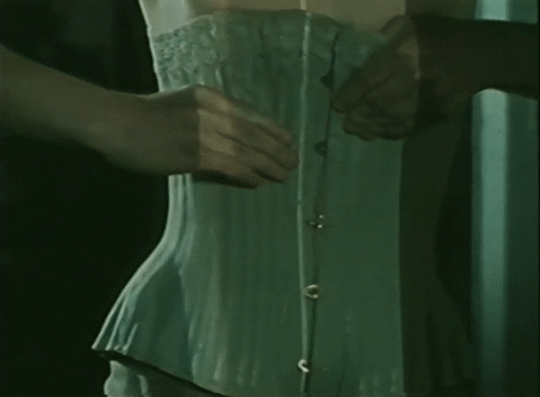

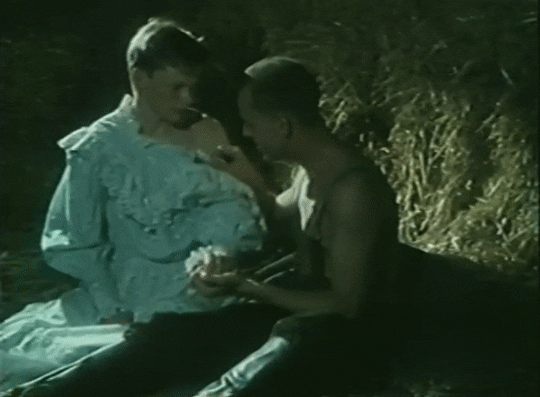
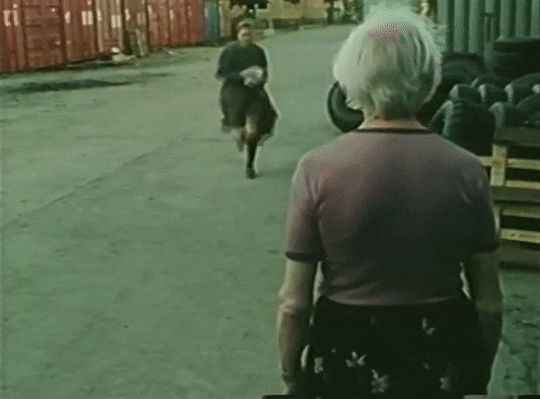
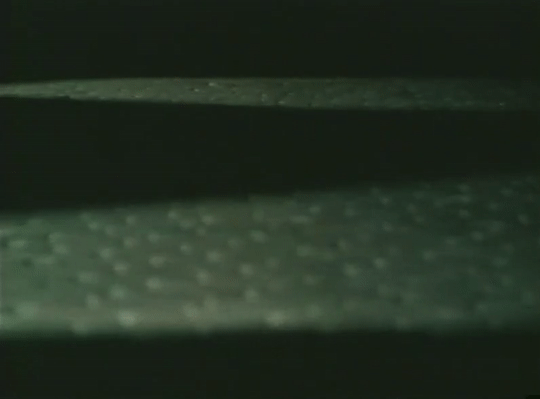




ICH BIN MEINE EIGENE FRAU (1992)
dir. Rosa von Praunheim
Half dramatization, half documentary, Berlin native and trans activist Charlotte von Mahlsdorf recounts incidents from her eventful life, from surviving the Nazi reign, to enduring the repression in East Germany, to helping start the German queer liberation movement.
(link in title)
#lgbt cinema#trans cinema#ich bin meine eigene frau#i am my own woman#german cinema#lgtb#trans#transgender#germany#charlotte von mahlsdorf#rosa von praunheim#lgbt movie#trans movies#german movie#lgbt film#trans film#german film#lgbt media#trans media#queer cinema#european cinema#1992#90s#1990s#1990s movies#1990s cinema#1990s films
107 notes
·
View notes
Text
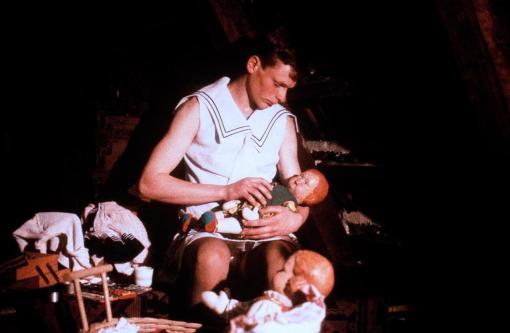

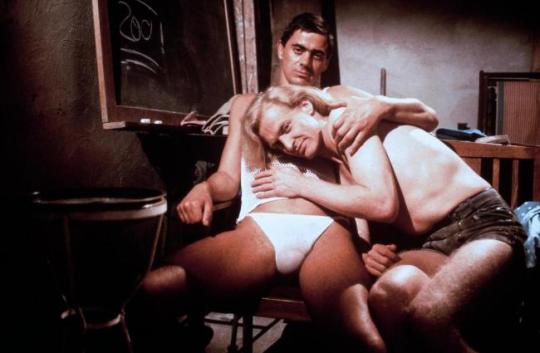

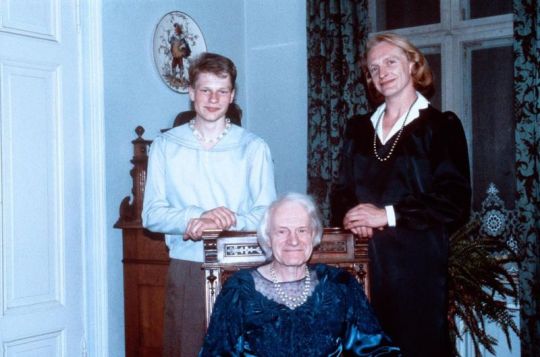
Ich bin meine eigene Frau | I Am My Own Woman (1992) - Rosa von Praunheim
#ich bin meine eigene frau#i am my own woman#rosa von praunheim#charlotte von mahlsdorf#film#watched in st louis#film still#watched in april 2024#lgbtq films#german cinema
5 notes
·
View notes
Text


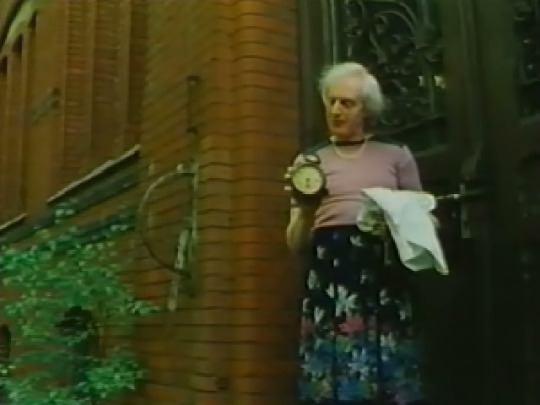
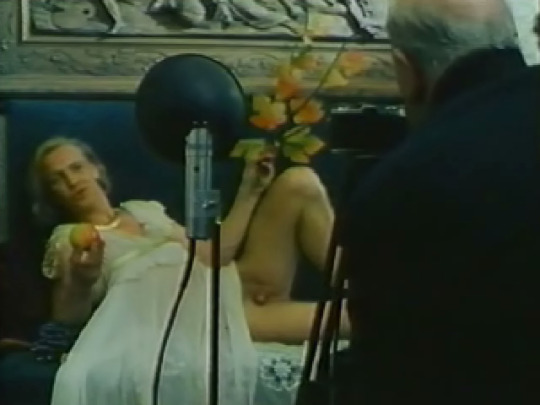
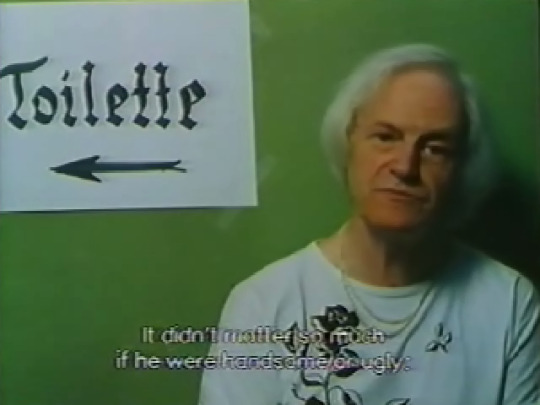
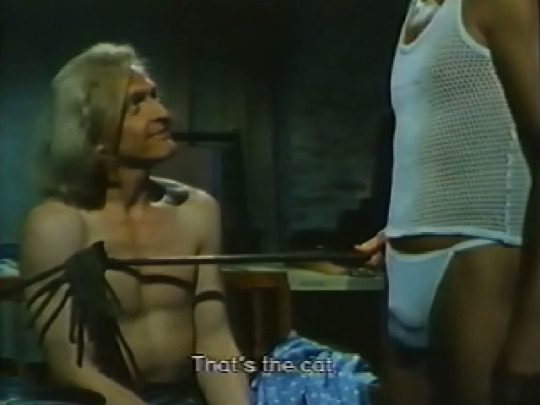

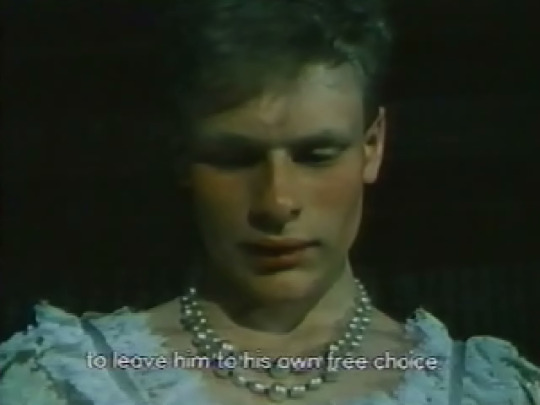
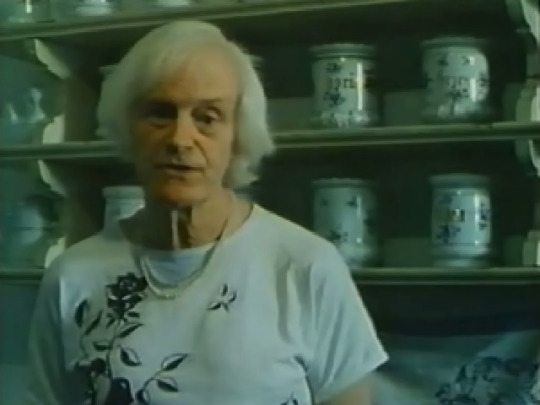

Ich bin meine eigene Frau | I Am My Own Woman | Germany, 1992 | Rosa von Praunheim
0 notes
Text
One really funny thing that TERFs are mad at me about is joking that East Germany had a transgender aesthetic, which is a shame because a) it’s true and b) not just an aesthetic - by the last years of the regime they were explicitly more progressive in some ways than West Germany, and the reunified Federal Republic wouldn’t let you legally change your gender without surgery until 2011!
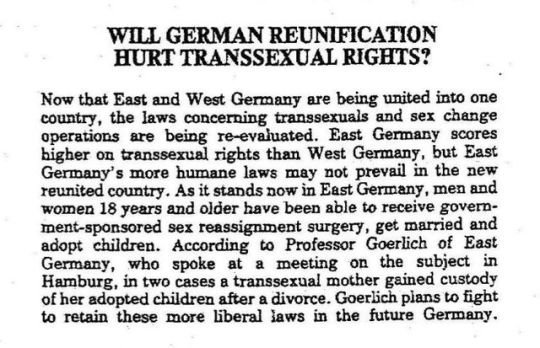
There’s an interesting case study in trans rights in the DDR in the form of Charlotte von Mahlsdorf, who was able to live openly as a trans woman even in the 60s at the price of informing for the Stasi. Given that a lot of people informed for a lot less protection than that, it shows that the authorities were minded to accept LGBT people out of some combination of a sense that they could be controlled politically, were a useful cudgel to attack the west with for their homophobia, and and quite possibly some genuine concern for the betterment of humankind etc etc. after reunification von Mahlsdorf got attacked in the street by neo-Nazis and when she died her family insisted she be buried under her deadname. Like everything about the DDR it is a complex legacy
All of which is to say that I’m going to say more things are transgender and you can’t stop me
724 notes
·
View notes
Text
THIS DAY IN GAY HISTORY
based on: The White Crane Institute's 'Gay Wisdom', Gay Birthdays, Gay For Today, Famous GLBT, glbt-Gay Encylopedia, Today in Gay History, Wikipedia, and more … April 24




Twins Karl and Robert Oelbermann
1896 – Robert Oelbermann, German youth leader. (d.1941) In 1919 Robert and his twin brother Karl founded the Nerother Bund youth group in the Cologne region. Like other German youth groups, it aimed to bring youth closer to nature through camping and hiking. Homosexual relationships sometimes developed from the intense adolescent male camaraderie, and the Nerother Bund accepted these friendships, as did a number of German youth groups at the time.
Soon after the Nazis took power in 1933, they dissolved all independent youth groups and urged the members to join the Hitler Youth movement. Robert refused and secretly continued his connection with the Nerother Bund. In 1936 he was convicted under the Nazi-revised criminal code's Paragraph 175 which outlawed homosexuality. Robert was imprisoned with 13 other members of the Nerother Bund.
Robert was one of more than 50,000 men sentenced under Paragraph 175 during the Nazi regime. By 1941 he had been transferred to the Dachau concentration camp. Like many "175ers" in the camps, Robert was required to wear an identifying pink triangle. The "175ers" were commonly segregated in separate barracks, subjected to particularly harsh treatment, and often ostracized by other prisoner groups.
Forty-four-year-old Robert died at Dachau in 1941.


1951 – John Edward Heys is an American independent filmmaker, actor and writer who lives and works in Berlin.
John Edward Heys was born and raised in New Jersey. Upon his father's death two days after Heys' 12th birthday, he was enrolled and educated at a private boarding school in northern New Jersey. Upon graduating from secondary school, Heys moved to Miami Shores, Florida, to the home of his maternal aunts.
After two semesters of college majoring in Liberal Arts, Heys moved to New York City in 1968 and became part of the East Village and West Village alternative life and LGBTQ culture.
In August 1969, he founded America's first bi-monthly newspaper for the LGBTQ community, Gay Power, the official title totaling 24 issues and was editor until August 1970. One of its covers was created by Robert Mapplethorpe. The newspaper also contained illustrations by Touko Laaksonen, better known as Tom of Finland, as well as regular contributors as Arthur Bell, Taylor Mead, Charles Ludlam, Pudgy Roberts, Bill Vehr, Pat Maxwell, Clayton Cole and regular columns from all of the active LGBSTG groups, from the most conservative Mattachine Society to the most radical The Gay Liberation Front, and all the other groups in between.
Heys created several one-man performance pieces and he acted with Cookie Mueller, H.M. Koutoukas, Charles Ludlam, Ethyl Eichelberger and as part of the Angels of Light NYC Group which Hibiscus founded after moving to NYC.
Heys was a subject for the artists Peter Hujar, Francesco Clemente, Charles Ludlam, Richard Banks, Frank Moore and numerous other photographers. Heys was a close friend & muse of the photographer Peter Hujar and subject of many portraits. Hujar once remarked upon Heys' resemblance to Diana Vreeland, stating that, "I can take a picture of her and another of you and there is a resemblance".
In Berlin he was a friend of Charlotte von Mahlsdorf, the Neue Deutsche Welle (new-wave) band Die Tödliche Doris and to the radical gay-activist Napoleon Seyfarth. Heys made two films of Charlotte von Mahlsdorf, one of Napoleon Seyfarth, and was the subject of an 8 mm short film which Wolfgang Mueller made in 1984 in the legendary 1930's bordello, Pensione Florian.
Heys' films have been screened at many worldwide film festivals.


1952 – Jean-Paul Gaultier's clothes have both influenced fashions in the clubs and on the streets and have also appropriated ideas from those sources. Since his early shows Gaultier has drawn upon street styles and club culture for his haute couture creations.
A frequenter of gay clubs in London, he typically incorporates elements of gay style into his collections. His 1996 Pin Up Boys collection, for example, drew upon the sailor as a gay icon and presented figure-hugging pink and blue Tom of Finland style outfits.
Born in Arcueil, France, Gaultier was an only child. The future designer was greatly influenced by his grandmother, Marie Garrabe, a hypnotist and practitioner of alternative healing who encouraged him to pursue the unmanly pastimes of sketching and costume making.
Gaultier first realized the impact of his sketches when he was punished by his school teacher for drawing Folies Bergère showgirls. He was made to walk around school with the drawing pinned to his back. The punishment, however, only made the young Gaultier aware of his potential for showmanship.
Gaultier had no formal fashion training. Instead, he sent hundreds of his sketches to various couture houses. Pierre Cardin was impressed by the work and hired Gaultier as a design assistant in 1970, on the young man's eighteenth birthday. Gaultier worked for a number of other French design houses before launching his first collection under his own name in 1976.
However, it was not until 1981, when Gaultier began reflecting and adapting with his own inimitable touch key strands of London's youth subcultures, that his talent was established and his reputation as the enfant terrible of the fashion world was consolidated.
In addition to producing groundbreaking and outrageous clothes for his highly theatrical fashion shows, presented by unconventional models (transvestites, old and fat women, tattooed and pierced youngsters), he also launched cheaper diffusion ranges—Junior Gaultier (in 1988), Gaultier Jeans (in 1993), and JPG (in 1994).
In his designs, Gaultier toys with notions of masculinity and the appropriate forms of dress for men to wear. In 1985 he created his first skirt for men. While it did not create a major impact, it had some effect, as fashionable young gay men were seen in the clubs of London and Paris wearing skirts.
For his Autumn/Winter 1988 collection Gaultier again attempted to create a skirt for men; and in 1993, responding to the popularity of kilts amongst gay men on the streets of London and New York, his Vikings collection included his reinvention of the skirt for men in the form of the kilt.
Gaultier has utilized his distinctive appearance, especially his bleached blond hair and blue and white striped matelot T-shirt, as a fashion statement in its own right. When he launched his men's fragrance in 1995, it was in a male torso bottle that was striped to imitate his signature T-shirt.
At the end of the 1980s, Gaultier suffered several reverses, including most painfully the loss, from an AIDS-related illness, of his lover and business partner of fifteen years, Francis Menuge.
But in 1990 he returned to the forefront of fashion by creating the now infamous corset and other stage costumes for Madonna's Blond Ambition tour. "I love Madonna. That was one of the best times of my career," he told the London Observer newspaper in 1997.
The designer lives in Paris, where his business is headquartered, but also spends time in Italy, where his clothes are manufactured.

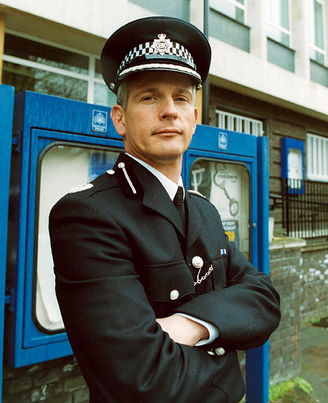
1958 – Born: Brian Paddick, Baron Paddick of Brixton, British politician, and Liberal Democrat candidate for the London mayoral election, 2008, coming third behind Boris Johnson and Ken Livingstone. He was, until his retirement in May 2007, Deputy Assistant Commissioner in London's Metropolitan Police Service and the United Kingdom's most senior openly gay police officer.
Paddick was educated at Sutton Grammar School, Sutton then went on to study at Queen's College, Oxford (BA), the University of Warwick (MBA), and the University of Cambridge (Postgraduate Diploma in Criminology). When he was at Oxford, he was Captain of the University Swimming Team and Vice-Captain of his college's Rugby team.
Paddick was a sergeant on the front line during the 1981 Brixton riots, an experience which undoubtedly shaped his attitudes about confrontational police action and strengthened his belief in community policing. He was later in charge of CID at Notting Hill and responsible for policing the Notting Hill Carnival. He was promoted to commander in December 2000, and fulfilled his ambition of becoming head of policing in Brixton.
In November 2003 Paddick was promoted to Deputy Assistant Commissioner, and in April 2005 he took over management of Territorial Policing across all 32 London Boroughs, with responsibility for 20,000 police officers and support staff. He was accountable for reducing 'volume crime' in London (all offences up to and including rape in terms of seriousness) and increasing the number of offenders brought to justice. He was the national lead for the police service on disability and mental health issues for a year and a half. He was also in the media spotlight as the senior Metropolitan Police Service spokesman for the funeral of Diana, Princess of Wales and after the 7 July 2005 London bombings.
Following a widely-publicised disagreement with Sir Ian Blair, the Commissioner of the Metropolitan Police, over the wrongful shooting of Jean Charles de Menezes at Stockwell Tube station on 22 July 2005, Paddick was assigned the position of group director of information management, which he considered a 'non-job'. Claiming that the Home Office had intervened for political reasons to ensure that Blair would not have to resign over the incident as it had occurred in the aftermath of 21 July 2005 London bombings, Paddick says he came to accept that his police career was over and that he would never achieve his goal of becoming a chief constable.
Between 1983 and 1988, Paddick was married. According to Paddick, it was 'a fairly conventional marriage' and his former wife said it was 'a wonderful marriage'. She did not know he was gay. He struggled with his sexuality until towards the end of his marriage in 1988. Since then he has been a vocal and visible advocate for gay rights and diversity.
He had a knack during his police career of attracting controversy over his policies, outspokenness and his sexuality but this seems to have done him no harm and has given him much credibility and popularity in his post-police political career, as he seems to a confident and charming man of integrity. Being somewhat handsome has probably not hurt either.
Paddick was a contestant on the eighth series of the ITV1 reality television show I'm a Celebrity... Get Me Out of Here! in 2008. On 1 December 2008, he became the sixth celebrity to be voted off the show. Interviewed by the show's hosts Ant & Dec after leaving the jungle, he explained his reasons for participating:
"For a long time I've been doing serious stuff. Thirty years in the police and running for mayor. It's all bad news that they want me to comment on. So I thought why not come and do something trivial ... It's the hardest thing I've ever done in my life, anything after this is a breeze."
In 2008, Paddick was ranked number 101 in the annual Pink List of influential gay and lesbian people in Britain published by The Independent on Sunday, down from number 83 in 2007.
Paddick presently lives in Vauxhall, London, with his husband Petter Belsvik, a civil engineer from Oslo, Norway; they met in a bar while on holiday in Ibiza. They married in Oslo 9 January 2009.
It was announced that he would be elevated to the House of Lords in August 2013. He was created a life peer on 12 September 2013 taking the title Baron Paddick, of Brixton in the London Borough of Lambeth.


1989 – Thomas Sanders is an American internet personality made famous by Vine and YouTube. He is best known for his Vine career until the app was shut down by Twitter at the beginning of 2017.
After the shutdown of Vine, he shifted his online presence mainly to YouTube, though he had started to create content on YouTube before that as well. His online personality consists of comedy, impressions, singing, and social justice.
He also has a career outside of the Internet performing in local theater productions with the hope of someday making it to Broadway. He managed to amass over 7.4 billion loops and 8.3 million followers on Vine, making his career one of the most successful in the app's short history.
Thomas Sanders was born and raised in Gainesville, Florida and still lives there today.
Although he does not reveal much about his family or personal life, he makes clear his pride of his predominantly Irish Catholic heritage, and he has revealed that he has three brothers: Patrick, Christian, and Shea.
On June 12th 2017, Sanders came out as gay in his video titled Having Pride.

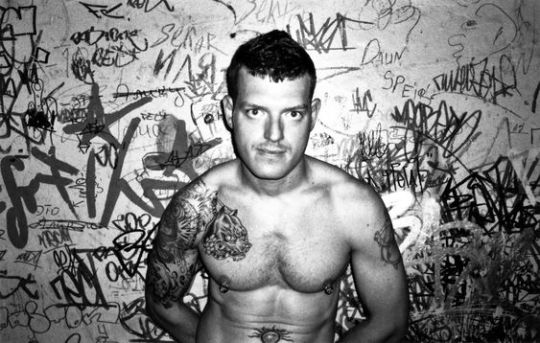
1994 – Yaroslav Mogutin, Russia’s most visible openly gay journalist, makes headlines when he attempts to register his marriage to American artist Robert Filippini. The head of Moscow’s Wedding Palace No. 4 refuses his application.


23 notes
·
View notes
Text
guys. I went to this tiny museum consisting of a collection of everyday objects from the 18th century with a focus on early music recordings, and the (now deceased) owner of the collection who renovated the whole house basically by herself was a trans woman.
there's a PLAY about her. it ran on broadway! it's called "I am my own wife"!!

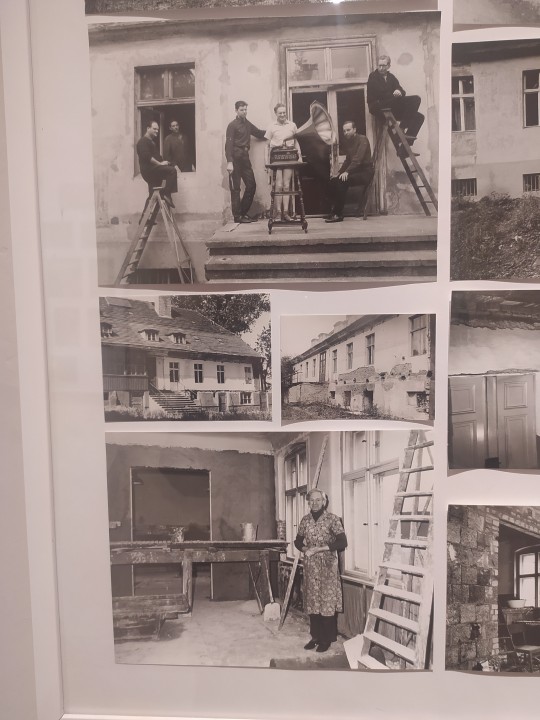
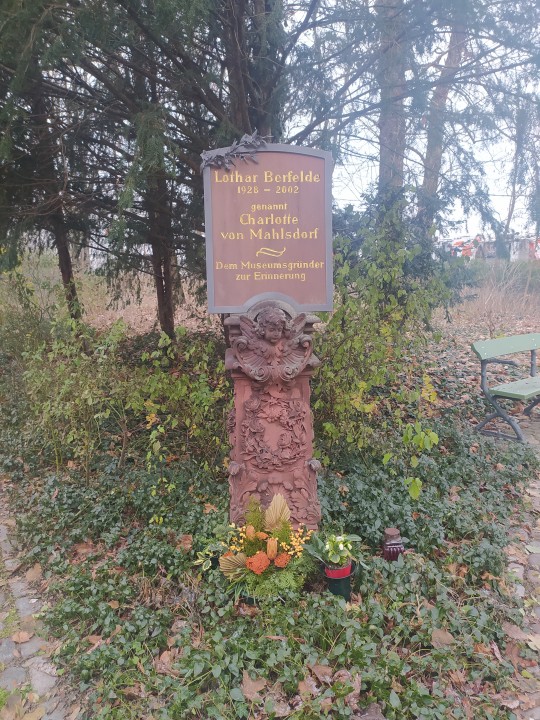
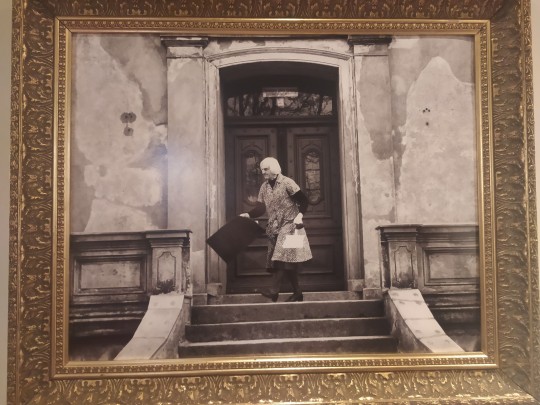
her name was Charlotte von Mahlsdorf. the museum is only open two days a week, and the lady did a whole guided tour just for the two of us. they have a little book out of all the couples who got married there (absolutely beautiful house!). lots of gay weddings :)
#yes i was a little emotional why do you ask lmao#her great uncle took her shopping as a child and bought her a girl's coat. she was accepted by her whole family. except her siblings but!!!#her favourite colour was blue :(( i saw her favourite skirt and coat and the bed she slept in!#history#lgbtq#ahhhh
20 notes
·
View notes
Text
I read once someone saying that there's two GDR movies about homosexuality, I think it meant the educational film Die andere Liebe (1988), and the theatrical film named Coming Out (1989).
Talking about this, I read this some months ago, that also mentions Charlotte von Mahlsdorf:
Huneke found that during the Cold War era, communist East Germany had more lenient sodomy laws and accepted gay activists’ demands more quickly than its democratic twin. As a result, East Germany contributed significantly to Germany’s pro-gay turn once the country unified in 1990, in some regards more than West Germany did.
West Germany reinstated former Nazis in government and kept the same strict Nazi-era sodomy laws, which criminalized any act perceived to be homosexual, including kissing and touching. As a result, the West German government prosecuted more than 100,000 gay men between 1949 and 1969, of whom over 50,000 were convicted. About the same number of gay people were prosecuted and convicted during the Nazi dictatorship, according to Huneke.
East Germany, on the other hand, repealed Nazi-era laws in an effort to be perceived as anti-fascist, and it reverted to the more lenient pre-World War II sodomy law, which only criminalized penetrative sex. And by 1957, East German officials stopped prosecuting consensual adult same-sex relations altogether, Huneke said.
“East Germany was sort of stuck between a rock and a hard place,” Huneke said. “On the one hand, it wanted to live up to this anti-fascist legacy, but it was also a brutal dictatorship that didn’t want to appear to be gay-friendly. So they took a reactive approach. In general, they seemed to let gay people be, unless someone who was connected to the regime was accused of being a homosexual.”
aaaalso I found this just now (and more, linking some from the search):
States of (Gay) Liberation in East Germany and West Germany
Shame and Love: East German Homosexuality Goes to the Movies (Kyle Frackman)
The Gay and Lesbian Movement in East Germany: A Timeline of Selected Laws, Events and Activists. Talking about movies:
1971-73: Rosa von Praunheim’s feature film Nicht der Homosexuelle ist pervers, sondern die Situation, in der er lebt is produced in West Germany...


Jstor: Out of the Closet behind the Wall: Sexual Politics and Social Change in the GDR
6 notes
·
View notes
Photo

❤️🧡💛💚 Themenwoche »Queerness in der DDR«💙🤍💜💖 Charlotte von Mahlsdorf, Gründerin des Gründerzeitmuseums in Berlin, rettete viele Objekte (Kunstwerke, Möbel, Alltagsgegenstände aus dem 19. Jahrhundert) vor der Zerstörung und Plünderung während des Zweiten Weltkriegs und der Nachkriegszeit. Das Museum entwickelte sich in der DDR zu einem Ort des kulturellen Austauschs und der Begegnung für queere Menschen, das unter anderem regelmäßig von der HIB (Homosexuelle Interessengemeinschaft Berlin) genutzt wurde. Ihr Buch »Ich bin meine eigene Frau«, in dem sie über ihr Leben als Transgender-Frau in der DDR berichtete, wurde als Theaterstück und Film adaptiert. Sie gilt bis heute als eine wichtige Persönlichkeit im Kampf für Toleranz und Gleichberechtigung in der DDR und darüber hinaus. Wir zeigen euch heute diese Kette aus unserer Sammlung, um uns an sie zu erinnern, denn auf vielen Fotos trägt sie eine Perlenkette. Mehr zur Themenwoche »Queerness in der DDR« gibt’s bei Facebook, TikTok und dem neusten Blogbeitrag des DDR Museum. ❤️🧡💛💚 Theme week »Queerness in the GDR«💙🤍💜💖 Charlotte von Mahlsdorf, founder of the Gründerzeit Museum in Berlin, saved many objects (works of art, furniture, everyday objects from the 19th century) from destruction and looting during the Second World War and the post-war period. The museum developed into a place of cultural exchange and encounter for queer people in the GDR, which was regularly used by the HIB (Homosexuelle Interessengemeinschaft Berlin), among others. Her book »Ich bin meine eigene Frau« (I am my own woman), in which she reported on her life as a transgender woman in the GDR, was adapted as a play and a film. She is still considered an important figure in the fight for tolerance and equal rights in the GDR and beyond. Today we show you this necklace from our collection to remember her, because in many pictures she is wearing a pearl necklace. To find our more about our theme week »Queerness in the GDR«, check out Facebook, TikTok and the latest blog post from the DDR Museum. #ddrmuseums #ddr #gdr #ddrgeschichte #queer #pride #berlin #museum #geschichte #perlenkette #vintage — view on Instagram https://ift.tt/d9K4RPs
6 notes
·
View notes
Text
extremely cool that the movie Coming Out (1989) was made and all and it's legitimately a pretty good movie that i would recommend watching even if just because it's historically noteworthy (you can watch it for free from the goethe-institut website here) but wow literally every other queer character in the film is more interesting than the main character. i would rather have watched a movie about basically anyone else in the bar who has a speaking role. it really felt like they wrote the main character to act as a bridge between the straight audience and the queer characters, rather than as a character in his own right with like, a personality that is shown on screen.
i did love that charlotte von mahlsdorf just played herself though. it's cool as hell that she was important enough in east berlin's gay community that she gets featured in the film. trans women rule
23 notes
·
View notes
Text
I spent my time at uni today researching Charlotte von Mahlsdorf and cried about historical trans women and then I came home and continued reading “The Last Girl Scout” by Natalie Ironside and now I’m crying about fictional trans women
#so it's a great day#let me know if there are any more women i should be crying about#I'll work it into my schedule
1 note
·
View note
Text
Respeitar as histórias trans. Diga sim ao talento trans. Chega de transfake!!
Desde a ação no Teatro São Luiz que o casting transfake tem continuado e a reposição da peça sobre Charlotte von Mahlsdorf volta agora a palco:
Respeitar as histórias trans. Diga sim ao talento trans. Chega de transfake! 🏳️⚧️
Roubar a história de um povo é uma tática de desumanização dos marginalizados e oprimidos. A maioria das pessoas queer, especialmente as pessoas trans, não conhecem as vidas e as lutas daqueles que vieram antes delas. Esta alienação da história é muitas vezes usada como uma arma contra as pessoas queer, negando a própria condição humana – que tem uma multiplicidade de expressões de género,…

View On WordPress
1 note
·
View note
Text
" Der SS - Mann hatte meine Bewacher etwas gefragt, was ich vor Aufregung nicht verstand, doch einer von ihnen antwortete: >> Das Früchtchen ohne Waffe ist unser, das machen wir gleich im nächsten Hof ab.<< Wollte er mich auch erschießen? Da fragte ein Offizier, wie alt ich den sei, und ich sagte >>sechzehn<<. Daß ich seit dem 18. März siebzehn war, hatte ich völlig vergessen. Das rettete mir das Leben. Den der Offizier brüllte daraufhin die Streife an: >> Wat, soweit sind wer noch nich, daß wer schon die Schulkinder erschießen, Schweinerei, verdammte.<<
Charlotte von Mahlsdorf wird 1928 geboren. Als Lothar Berfelde. Der Vater ist tyrannisch. Möchte aus dem mädchenhaften Knaben einen >> echten<< Soldaten machen. Charlotte von Mahlsdorf wächst zunächst im Nazi Deutschland auf. Übersteht als schwuler Transvestit auch die SED - Bürokratie. Erlebt jedoch immer wieder Angriffe durch die Behörden. Später ebenso Übergriffe durch Neonazis. Warum dieser Titel heute? In den letzten Tagen gab es immer wieder Anfragen. Nette. Ohne Groll. Hintergrund waren meine Beiträge zu Filip Müller. Was ist mit den anderen Opfern? Gibt es da keine Bücher? Berechtigte Frage. Doch. Es gibt diese. Natürlich. Auschwitz als Synonym genommen...das Weltall kann die Grausamkeiten nicht aufnehmen. Mit irgendetwas muss ich ja beginnen. Also dieses Thema. An Bord der wunderbare Harry Raymon " anders von anfang an." aus der @stroux_edition. Hilfreich war auch immer wieder Nicolaus Sombart. " Deutsche Männer und ihre Feinde. Erschienen im @lilienfeldverlag.
Heute finden in Niedersachsen Landtagswahlen statt. Sieht gar nicht übel aus. Bis auf die AFD. Die legt leider nochmal zu. Und damit sind wir wieder beim Thema. Die jeweiligen Aussagen der Kirchen finden leider ebenfalls ihren Widerhall. Konkret. Lieber Nazi als schwul. Sexuelle Gewalt kommt in deren Vokabular nicht vor. Dürfte sich um eine Art von Amnesie handeln. Dabei fiele mir Roddy Doyle noch ein. " Lächeln." Erschienen im @goyaverlag.
#queer #stolpersteine #büchergegendasvergessen
instagram
0 notes
Text
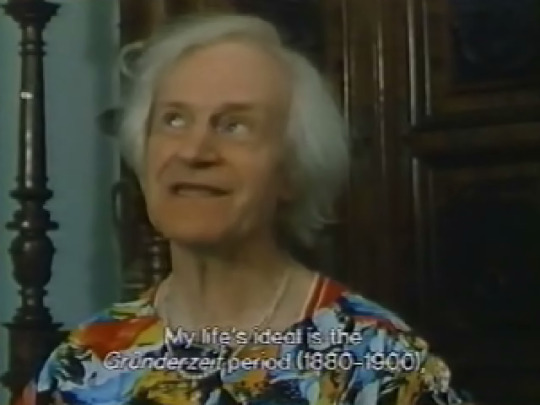
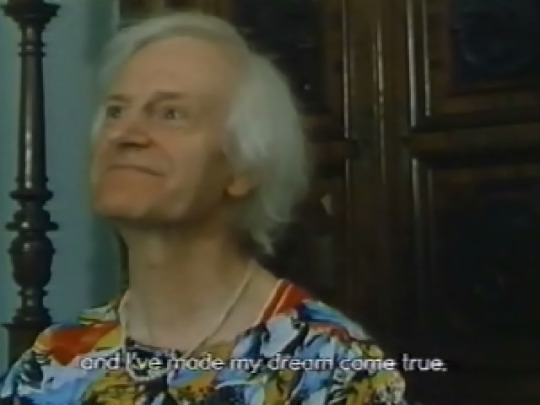

Ich bin meine eigene Frau | I Am My Own Woman | Germany, 1992 | Rosa von Praunheim
1 note
·
View note
Text
15 DE JUNHO DE 2022 ,39o FESTIVAL DE ALMADA (1) : APRESENTAÇÃO NA CASA DA CERCA . REGRESSO AO AR LIVRE NO PALCO GRANDE , ABERTURA COM CRISTOPH MARTHALER , OUTROS “MONSTROS” DO TEATRO CONTEMPORÂNEO E 20 ESPECTÁCULOS DE GRANDE INTERESSE . A NOITE TERMINOU A VER O RIO AO SOM DA MÚSICA DO HISTÓRICO CABO-VERDIANO DANY SILVA !: Rodrigo Francisco, director da Companhia de Teatro de Almada e do festival apresentou com entusiasmo, elegantemente contido ,a 39.ª edição do festival que irá decorrer entre 4 a 18 de Julho, em salas de Almada e Lisboa uma marca incontornável na cultura portuguesa . Se eram já conhecidas as presenças de Robert Wilson, Thomas Ostermeier e Wim Vandekeybus, outra novidade foi a reabertura do Palco Grande e do teatro ao ar livre – o regresso da festa num festival de verão .Será no Palco Grande, simbolicamente, que terá lugar, a 4 de Julho, o espectáculo de abertura, Aucune Idée, uma criação de Christoph Marthaler, um dos meus encenadores favoritos ( inesquecíveis “King Size” e” Ille flotante” em Almada ). Nome grande dos palcos europeus ( Tristão e Isolda em Bayreuth) . Marthaler coloca o seu actor-cúmplice Graham F. Valentine a partilhar o hall de um condomínio com o músico Martin Zeller, num diálogo que traz à tona Bach e os genéricos de programas televisivos, como “se Kafka tivesse aterrado numa comédia de boulevard”.Depois são mais 19 espectáculos de grande interesse ..Mais uma vez o Festival traz reposições de companhias e artistas portugueses. Assim acontece com Se Eu Fosse Nina, texto e encenação de Rita Calçada Bastos e interpretação de Carla Maciel, num mergulho nas profundezas da tchékhoviana protagonista de A Gaivota , e Eu Sou a Minha Própria Mulher, texto de Doug Wright com encenação de Carlos Avilez, em que Marco D’Almeida se transforma em Charlotte von Mahlsdorf, mulher nascida em corpo de homem que atravessou o regime nazi alemão e o regime comunista na antiga RDA . Nas produções nacionais lugar também para Em Casa, no Zoo, pelo Teatro dos Alóes de ; Selvagem, de Marco Martins , Taco a Taco, pelos Artistas Unidos , Sonho, de Strindberg pelo Teatro do Bairro . Este será um ano de reforço de relação com criadores essenciais como Bob Wilson (I Was Sitting on My Patio This Guy Appeared I Thought I Was Hallucinating, ou Thomas Ostermeier (ödipus).
A dança o circo contemporâneo e o teatro de máscaras também aparecem nesta edição. Desde logo, através de Smashed2, de Sean Gandini e Kari Ylä-Hokkala, dois malabaristas que se reinventam. Mas também pelos premiados alemães Familie Flöz que, desta vez, trazem Hokuspokus , um jogo com o mito de Adão e Eva .Entre as novidades, destaque para a presença da coreógrafa franco-ruandesa Dorothée Munyaneza e para o regresso do encenador alemão Peter Kleinert, de novo à frente da Companhia de Teatro de Almada para estrear uma nova produção de Noite de Reis, de Shakespeare.A peça e “uma mistura perfeita entre tragédia e comédia” em torno de temas como “amor, género, identidade e auto-descoberta”. Munyaneza, sobe ao Palco Grande, Mailles, peça construída por seis mulheres africanas exiladas em diferentes partes do mundo, e assente num discurso poético. Depois dos discursos oficiais da apresentação houve como habitual um concerto e um beberete. Desta vez foi protagonista o histórico músico cabo-verdiano Dany Silva . Aos 75 anos o artista de carreira ilustre interpretou alguns dos seus êxitos como Branco, Tinto e Jeropiga/...,Até Que Fura ,Estou Farto/Não Há-de Ser Nada e Crioula de S.Bento . Numa noite amena ficamos a verbo ria paisagem maravilhosa que se disfrute do terraço da Casa da Cerca .
A mesa esta posta para o banquete anual dos que amam o teatro

….
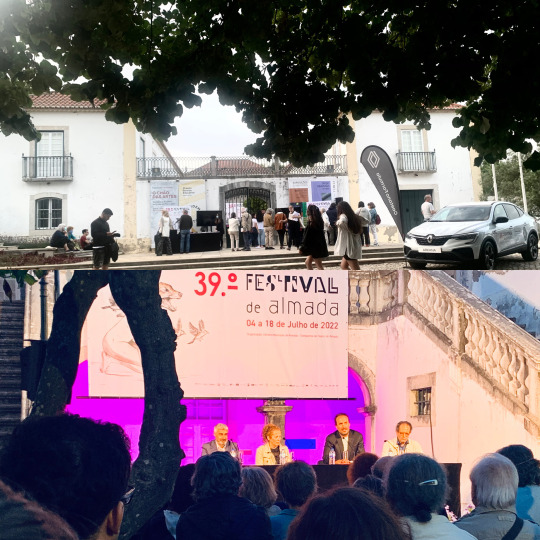
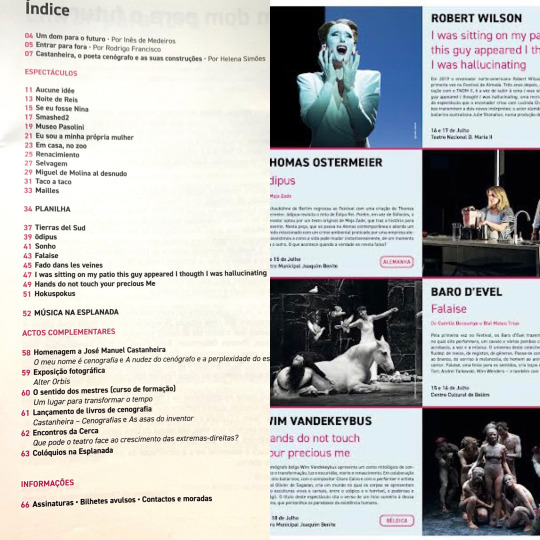
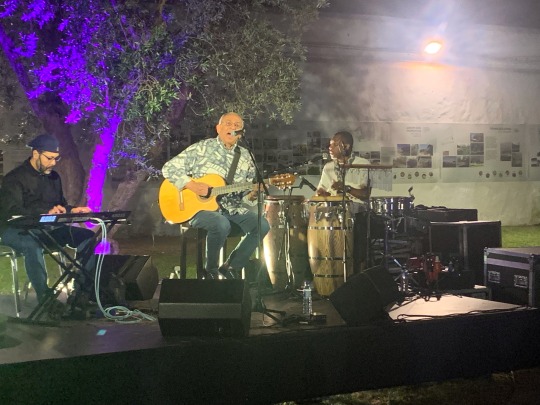
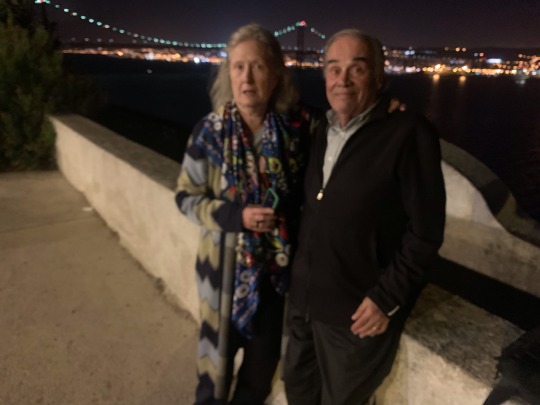
0 notes
Text
REVIEW: "I Am My Own Wife" at Hubbard Hall
REVIEW: “I Am My Own Wife” at Hubbard Hall

View On WordPress
#Andrea Nice#Cambridge NY#Charlotte von Mahlsdorf#Daniel Salzer#Doug Wright#Hubbard Hall#Hubbard Hall Center for the Arts and Education#I Am My Own Wife#Kristoffer A. Ross#Lothar Berfelde#Roseann Cane#Rylan Morsbach#Trey Morehouse
1 note
·
View note
Photo
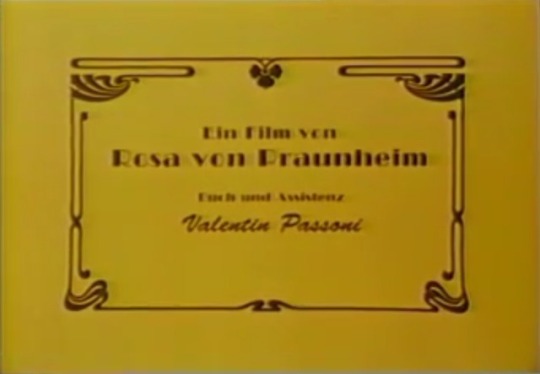
ich bin meine eigene frau (1992)
3 notes
·
View notes